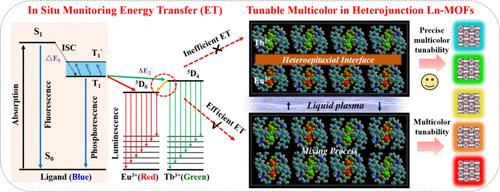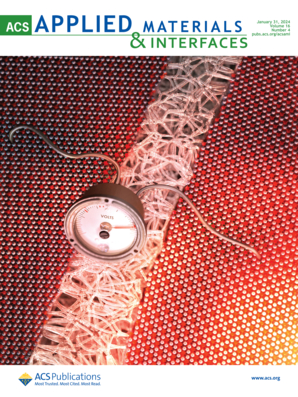Tunable Multicolor in Heterojunction Ln(BTB) Fast Prepared by Liquid Plasma with In Situ Spectral Monitoring for Anticounterfeiting Application
IF 8.3
2区 材料科学
Q1 MATERIALS SCIENCE, MULTIDISCIPLINARY
引用次数: 0
Abstract
Lanthanide metal–organic frameworks (Ln-MOFs) represent a promising class of multicolor luminescence nanomaterials with broad application prospects. However, the fabrication of high-quality, tunable multicolor Ln-MOFs for optical applications remains highly challenging due to the lack of suitable processing methods. In this work, an integrated device was introduced that used dielectric barrier discharge (DBD) liquid plasma for synthesis, which was coupled with in situ spectral monitoring, enabling the fabrication of multicolor heterojunction Ln-MOFs. This approach facilitates precise multicolor control from red, orange-red, yellow, and pale-green to green by adjusting the Tb3+-to-Eu3+ ratio based on real-time spectral data. The heterojunction architecture effectively suppresses undesired direct Tb3+-to-Eu3+ energy transfer, which commonly occurs in mixed-metal structures. The fabricated heterojunction Ln-MOFs were characterized by using X-ray diffraction, infrared spectroscopy, UV–vis spectroscopy, scanning electron microscopy, and photoluminescence techniques. The application studies demonstrated that these multicolor heterojunction Ln-MOFs hold significant promise for the development of anticounterfeiting materials across a wide range of applications.

求助全文
约1分钟内获得全文
求助全文
来源期刊

ACS Applied Materials & Interfaces
工程技术-材料科学:综合
CiteScore
16.00
自引率
6.30%
发文量
4978
审稿时长
1.8 months
期刊介绍:
ACS Applied Materials & Interfaces is a leading interdisciplinary journal that brings together chemists, engineers, physicists, and biologists to explore the development and utilization of newly-discovered materials and interfacial processes for specific applications. Our journal has experienced remarkable growth since its establishment in 2009, both in terms of the number of articles published and the impact of the research showcased. We are proud to foster a truly global community, with the majority of published articles originating from outside the United States, reflecting the rapid growth of applied research worldwide.
 求助内容:
求助内容: 应助结果提醒方式:
应助结果提醒方式:


